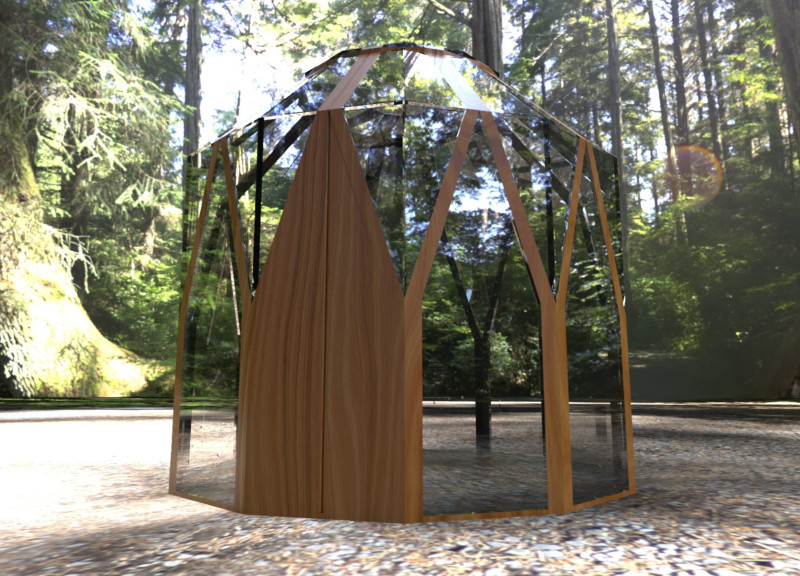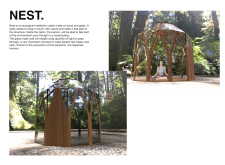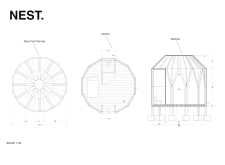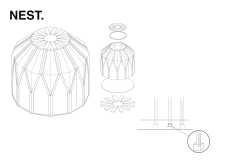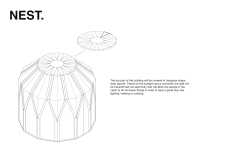5 key facts about this project
This meditation cabin represents more than just a physical space; it embodies a philosophy of simplicity and connection to nature. The primary function of the project is to facilitate meditation and mindfulness practices, offering a serene retreat for individuals seeking solace and reflection. The design is both practical and thoughtful, ensuring the cabin meets the needs of its users while remaining seamlessly integrated into its environment.
The overall form of the cabin is octagonal, a shape often associated with balance and harmony. This architectural choice not only enhances the visual appeal of the structure but also contributes to its functionality. The configuration creates an open interior layout that allows for flexibility in the arrangement of furniture and spaces conducive to meditation. An abundance of natural light floods the interior through the extensive use of glass panels, which provide expansive views of the outdoors while promoting a sense of openness and connection to nature.
Materials play a crucial role in the project, reflecting a commitment to sustainability. Wood frames the structure, embodying a warmth that resonates with users and adds an organic quality to the design. The specific type of wood is selected for its sustainability, emphasizing the project's eco-conscious philosophy. The use of high-quality glass not only facilitates ample daylighting but also minimizes the need for artificial lighting, contributing to an energy-efficient environment. Additionally, solar panels are integrated into the design, allowing the cabin to harness renewable energy, further aligning with the principles of sustainable architecture.
Unique design approaches in this project include the intentional interaction between the cabin and its surrounding environment. The circular, dome-like shape evokes the natural forms found in nature, providing an aesthetically pleasing solution that offers a sense of safety and enclosure. The elevated pillars resemble tree trunks, reinforcing the connection to the forest landscape. This approach encourages wildlife interaction and enhances the holistic experience of being immersed in nature.
Another notable aspect of the architectural design is the focus on psychological well-being. The strategic placement of windows and glass walls not only optimizes views of the natural surroundings but also promotes a calming atmosphere within the cabin. The open layout allows occupants to choose how they interact with the space, whether through individual meditation or group activities, fostering a sense of community while still respecting personal solitude.
Overall, the project represents a thoughtful exploration of how architecture can serve to enhance mental health and well-being. The design is not only about creating a physical structure but about cultivating an environment that nurtures peace and mindfulness. This meditation cabin underscores the vital role that architecture can play in promoting a healthier lifestyle and a deeper connection to the natural world.
For anyone interested in learning more about this innovative project, exploring the architectural plans, architectural sections, and architectural designs will provide deeper insights into the thoughtful ideas that shaped this remarkable meditation cabin.


